Dividing opinion was fun, but now The Horrors are creating the music you’ve always wanted them to
The change gang
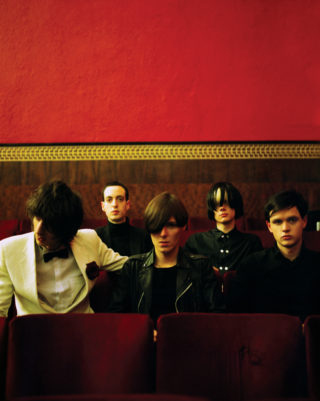
The change gang
“Mick Jagger said something about not playing ‘Satisfaction’ when he’s 50. The moment a band stops looking to the future they should just give up, because it’s pointless” – Faris Badwan.
Since they first arrived there’s been many misconceptions about The Horrors, but none have been further from truth than those that questioned the band’s sincerity. They were the ultimate haircut band; all looks and styling; a fad; very possibly – in many people’s eyes – a flat-pack group; the result of an A&R executive’s Malcolm McLaren obsession. They had to be fakes and no amount of eyewitnesses could vouch for their image. If you’d been to Junk – the Southend club founded by Spider Webb (then plain old Rhys Webb) – and had seen Joshua Third’s preened Robert Smith bouf bobbing about to The Sonics, you were mistaken, deluded, or on the sinister payroll. And as Faris Rotter (now Badwan once more) would fling black paint at crowds and climb speaker stacks – barking lyrics as he went – he furthered suspicions, clearly pulling focus from his band’s musical know how.
We’d longed for a band that looked less like estate agents and more like the idols our parents could boast about, and once they’d arrived our cynicism worked overtime to rid the world of these stylish spectres.
“[Our style] helped in the sense that just as many people would get into us after seeing a photo as they would totally write us off, so it sort of balances itself out,” explains Faris in his hushed, articulate tone. “But as we’ve always said, the way we dress just reflects the music we like.”
“As strange as it might sound, there was never much thought that originally went into that,” adds Spider Webb. “We’d be just running around Southend or going to London to watch bands and playing music together, so it was always the last thing we’d be thinking of, but of course, throw us in a climate where everyone’s wearing the same jeans or whatever and it does become a different thing. And we do come from a different place, and we don’t want to be that kind of band, which is why we listen to the records we do and try to be the band that we are, because we don’t really feel an affinity with what a band should or shouldn’t be. I imagine now how it could have been perceived. The funny thing is that people who knew our backgrounds and what we were trying to do when introducing bands like The Seeds and The Sonics – be it kids, journalists or musicians – that was just it; it was there. For people that didn’t know where it was coming from it probably looked like a ridiculous display, which was missing the point completely.”
On the set of The Horrors’ new video shoot, the topic of aesthetics is unavoidable; partly because the oversized red carnation sprouting from the lapel of Faris’ white DJ is nearly having my eye out, and partly because the band’s appearance has once again been a media talking point surrounding their return. Haven’t you heard? The Horrors have stopped wearing eye makeup! Shit! Has our ‘Jade Goody: The Am I A Minga Years’ issue gone to press yet, or can we claw it back for this big seller? – “I’m wearing the same clothes now that I always have,” says Faris on the matter, Spider Webb deflating any excitement left in the subject by simply stating, “I think most people look different two years later.”
Needless to say that while Coffin Joe’s hair length was absorbing more than its fair share of attention, being neglected was the music that made up The Horrors’ debut album. ‘Strange House’ charted at 37, and soon dropped from the top 40. Considering the band sang about asylum seekers (‘Sheena Is A Parasite’), collecting abandoned babies gloves (‘Gloves’) and covered Screaming Lord Sutch (‘Jack The Ripper’), it was a very respectable start. But their major label had gotten too caught up in the hype – plastering expensive tube adverts for the release across London – and, expecting more for the money invested, dropped the band. They, like most, had missed the point of the group, and tracks like ‘Count In Fives’ and ‘She’s The New Thing’ had their pop melodies overlooked by everyone except E4 who used the latter to soundtrack a TV trailer.
“For us, we did exactly what we wanted to do for the first record,” reflects Webb. “When we got together the aim was to get out and play live, and possibly record a 7”. That was our aim. We’d only been together for a matter of months and we were learning it as we went along… I think the first record is exactly what we should have done…”
“Absolutely,” agrees Faris. “As Rhys says, we chose to learn from the live environment, and the excitement of that, rather than in rehearsal rooms, and I think that record has its place in time, as does this new one.”
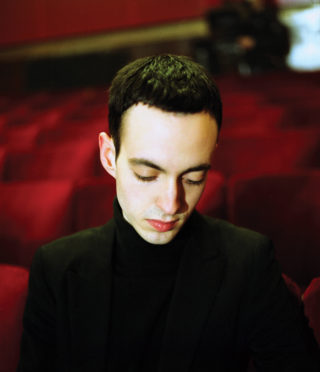
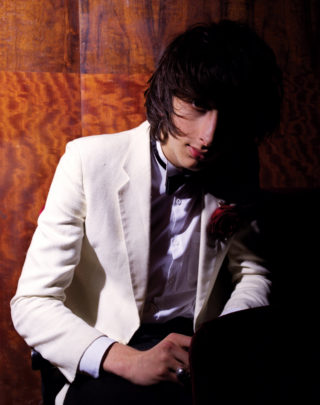
In a forgotten east London venue called Toynbee Hall, The Horrors reset to mime once more to ‘Who Can Say’. Oddly, we’re still not sick of the track that will become the band’s first ‘proper’ comeback single, despite having heard it 15 times in the last hour. Granted, with every playback we do get a different Faris Badwan to keep us entertained – nonchalantly mouthing his words and twitching to cymbal crashes, over and over but never in the same places, much to the annoyance of the director, I’m sure – but it takes little away from the song itself. If the download-only release of ‘Sea Within A Sea’ demonstrates how much The Horrors have been experimenting with krautrock walls of sound, ‘Who Can Say’ boasts of the band’s progression in melodious song writing, sounding like a primitive New Order as its looping synth chimes over its author’s regretful lament – drawls Faris: I never meant for you to get hurt/And how I try/Oh how I try. From its overdriven, grinding bass intro to its Shangi Las tambourine bashes, it’s due to punt those cynical ‘fashion band’ jibes out of sight, as is the rest of album number 2, ‘Primary Colours’.
The seeds have been sewn for the second coming of The Horrors. If water-cooler gossip is to be believed, promo copies of the new record permanently live in the office stereos of magazines, papers and websites everywhere. Everyone loves the band’s new sonic sound. Who’d have thought it? Well, very few, in fact.
“I think we kind of expected that,” says Faris of the surprise being caused. “We know that people have preconceptions and, in some ways, part of the satisfaction about making a record like this is that people like that will probably be confused. We were just really excited to make it. We’d toured the first record for so long. In the first year of being a band, the first album was a documentation of our time writing whenever we could between shows. When we finally got to the end of touring that record it really felt like it was time to get started writing again, and we were really happy to do that. It wasn’t in any way a chore.”
“It was great,” continues Webb, as Joshua Third appears with a saw and wanders off in search of some health and safety-flouting amusement. “The best thing about it was that we’d been waiting to get back into the studio for so long that we hid ourselves away in this place in Stoke Newington where we worked best and could come and go as we pleased. Even by the end of the sessions for ‘Strange House’ we’d started to branch out and take steps forward. Tracks like ‘Sheena’ and ‘Count In Fives’ were the first things we wrote as a group, but then with things like ‘Draw Japan’ and ‘A Train Roars’, written almost 8 months into being a band, we were already starting to explore different sonic ideas, and that set the pace for where we wanted to go.”
Sonics, walls of sound and krautrock drones: they’re all at the heart of ‘Primary Colours’. Tracks like the opening ode to The Jesus Mary Chain, ‘Mirror’s Image’, and the lethargic ‘I Only Think Of You’ (owing much of its hypnotic trudge to My Bloody Valentine) boast them more overtly than others, but shoegaze whirrs and unidentified noises underlie the whole album. From the baggy (yes, baggy!) ‘Do You Remember’, to the beautiful ‘Scarlet Fields’ (the band as close as they’ll ever get to ‘doing Joy Division’), they’re there.
While Faris is already looking to a third album – “The next one will be better,” he’d told me earlier – Spider Webb is particularly excited about this one. Dragging on a cigarette while cameras are realigned and film crew huddles take place, he lets loose his enthusiasm about what his band are currently achieving. “For me, there’s an element of the record being this constantly moving, growing, throbbing sound, or piece,” he smiles. “‘Sea Within A Sea’ seems to tie the whole thing in this infinite circle. Starting with the intro to ‘Mirror’s Image’, and ending with the sequences that take you out of ‘Sea With In A Sea’ seems to extend this idea of movement and infinity almost.” Plainly, The Horrors are no longer bashing out simple, ferocious punk songs; they’re meticulously studying the form of everything they write.
In coming months the record’s producer will no doubt be accredited to the fine details that make ‘Primary Colours’ a great album, rather than a good one. And Portishead’s Geoff Barrow certainly deserves his curtain call, but so too does film director Chris Cunningham. As rumoured, he produced two of the album’s ten tracks, one of which the band cite as vital in shaping everything that followed. ‘Three Decades’ was the first song the band worked on after the promotional schedule for ‘Strange House’ finally halted. The blueprint of ‘Primary Colours’, it remains Spider Webb’s favourite track, he says, “because it cemented the idea of what we wanted to do.”
“Chris did two of the tracks but it got to a point where we needed to record the whole album and he was working on two films,” explains Faris “so we had the choice of either waiting a couple of months to do it with him or doing it there and then. We decided to just push ahead with it, because we already had a clear idea in our heads of what we wanted the record to be, so, y’know, we didn’t want him to come in and change things too much anyway. It would have been a great album with him, no doubt, but it would have been very different.”
Barrow was a wise substitution. His ear for industrial soundscapes – showcased on tracks like ‘Machine Gun’ from Portishead’s album ‘Third’ – sat side by side with Cunningham’s shrouded foundations, and he knew how to police the band’s creativity – “He’d definitely tell us when it was an idea too far,” says Webb – but no, he didn’t mould The Horrors into the band they are now, an opinion that detractors are already sharpening for battle.
He didn’t mould them because he didn’t need to. After a whole summer of writing, the bands were ready to record 10 of their completed 35 songs with an unmoveable sense of how they wanted each one to sound. On a major record label, ‘Strange House’ had been finished in a matter of months to capitalise on the attention the band were receiving. This time around, on indie XL Recordings, The Horrors were given no deadline to deliver an album by.
“There was completely less pressure to write,” explains Webb “because this time we knew that we’d recorded the first album, we’d put it out and done completely what we wanted to do; we got peoples’ attention and we wanted to turn people on to something different. But this time we could take a step back. We weren’t being rushed into something, we didn’t have to deliver a single by X point. And we enjoyed that way of working then, but now we can explore as we write.”
But there was surely a self-perpetuated pressure. Few bands get a second bite at the cherry, none get a third, so what if ‘Strange House’ wasn’t a false start but rather the band at their creative peak? The Horrors had to believe that this is the most important record they’d ever make.
“I think we would always have that aim anyway,” says Faris “but I think to have that concern you have to worry about the money you’re going to make as a band. If we didn’t have a label we’d have made a record and put it out ourselves. When you’d be doing this anyway, you’re not really worried about how many people will buy your record in the short term. Ultimately, as it was our chance to make something totally coherent – write a body of work and pick from that – there was no pressure, because we knew we could do it. We’d made an album with no time whatsoever, so when we were given time to do it we had no doubt that it would be a problem.”
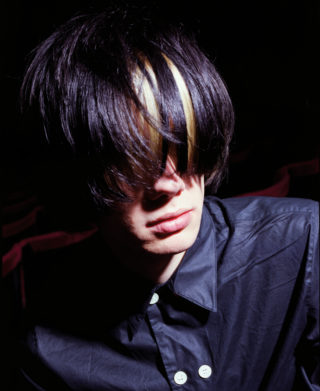
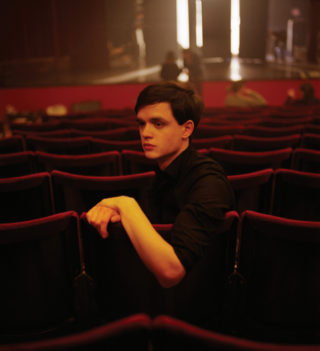
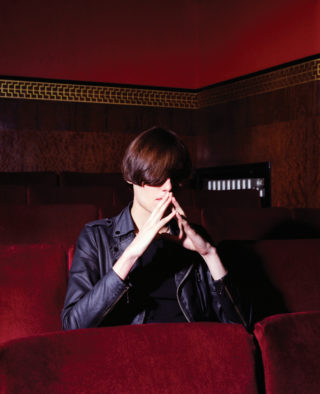
On The Rolling Stones’ last tour, Mick Jagger shook his elastic torso around the O2 Arena whilst croaking ‘Satisfaction’. With all the exuberance of a 22-year old, he pointed and pomped around the vast stage. He was 61. Last month, Faris Badwan led The Horrors on stage to perform their first gig in a year. In the Rich Mix Cinema, Bethnal Green, the band then demonstrated just how much they’d been heeding their own advice, “looking to the future”. They’re very own ‘Satisfaction’, ‘Count In Fives’, was heard, but delivered with all the rushed angst of a band performing out of duty, complete with a two-footed attack on the static crowd from the band’s front-man. On a set list of 10, only one other previously released Horrors song featured – ‘Sheena Is A Parasite’. “Enjoy this one while you can,” spat an unimpressed Badwan “we’re going to play it double time.”
Two things were of note that evening – the new material failed to disappoint, sounding far more epic than even an on-looking Jason Pierce had no doubt expected, and the two oldies that reared their heads didn’t appear out of place, however quick they were played. The proof was in every industry bod’s nod; The Horrors had evolved into something quite special while keeping their own identity in tact.
In Toynbee hall one week later, Faris tell us, “I hated it”. On the night itself he’d huffed, “It’s like being in Japan, seriously”, a true observation of how stagnant the audience was. The band had been great but the gig hadn’t been. We’d love to blame the sterile white box room of The Rich Mix, but, in truth, it was due to just how journalist-heavy the crowd was. We couldn’t even hide behind the fact that we didn’t know 80% of the set list, because ‘Primary Colours’, as the trusty water-cooler gossip has informed us, had been our new obsession for weeks.
“I didn’t particularly like it,” reiterates Faris “but that was more due to the sound quality on stage. But I’ve always found it odd playing to people with their arms folded.”
Webb meanwhile considers the show an important moment in the band’s career, and one that he’s adamant to draw positives from. “Obviously we were nervous playing our first gig in a year,” he says “but I usually have this thing where I’m nervous before but then when you get on stage you fall into place and the gig starts going on. It was strange this time having lived with the record and knowing all the songs, and choosing to play 8 new songs from a 10 song set, playing the first notes of the song and then suddenly being hit by ‘hang on this is quite different from before’. But then, by half way through, I could almost hear and feel the audience listening and being involved in a different way. And of course it was asking a lot to present this new record, but what brought the whole thing together was the reception for ‘Sea Within A Sea’, which had only been released for a matter of days. It was bigger than the older tracks, so it put things into perspective, and I think that could have only ever happened at that point in time, with people having not heard the album.”
Next on the band’s live calendar is an appearance at Coachella Festival, followed by a US tour with The Kills that takes in 25 shows in 30 dates.
“Doing the States is amazing,” nods Faris “because every State is like a different country. And I find England so annoying because every town has the same shops, and that’s not happened in America yet. I just can’t handle seeing Marks & Spencer, Starbucks, Topshop; every High Street is the same, there’s no identity of any of the towns that you go to, which is shit really.”
Flying home for a UK tour in May, then, doesn’t bare thinking about – the pilot in Topshop loafers, stewards pushing duty-free booze from Marks before the plane has even touched down. ‘Primary Colours’ will be 5 weeks old by then though, and people are going to want to hear it played live. Fans are going to want to hear it, and so too are the swathe of young bands that The Horrors unknowingly inspired with ‘Strange House’. O.Chilrden, Ulterior, Ipso Facto and S.C.U.M. (the reverb band of Spider Webb’s brother, Huw), they (and plenty more besides) have spent the past 18 months dispelling another misconceptions about Faris and Co. – that The Horrors were just a fad. The ‘nu-grave’ tag might not have stuck to the monochrome gangs that followed the short, sharp belch of ‘Sheena Is A Parasite’, but the dark gloom-rock attitude of striving for originality did. As festivals like Offset, and club nights like The Dice Club, suggest, for many, music is nearing its best once more. For Faris Badwan though, young bands need to try harder.
“I can’t believe that there’s anyone who would think that music’s at it’s best,” he frowns. “Find me those people. I think that the best music is born out of difficult economic climate, so maybe we’re about to have a great flurry of brilliant bands, but, to be quite honest, right now you could probably count the amount of good bands in London on one hand, and you’d still not make it to five.”
We’re tempted to float a so-awful-it’s-surely-brilliant ‘Count In Fives’ gag, but we don’t. Instead, we join in verbally shoeing Spotify and digital music (unsurprisingly, the band that only buy second hand vinyl are fans of neither, once we explain exactly what Spotify is) and ask what the most important lesson learned by The Horrors is.
“Personally, I’ve learnt that a lot of people’s opinions are meaningless. Y’know, we’re surrounded by bands who aren’t interested in doing anything different from the band next to them or the band playing the same club the following week. It’s funny that those bands try to dismiss things that are different to them, but ultimately it’s why no one has any longevity anymore, why no one makes more than two records, because they don’t have enough ideas to sustain themselves. I just have total conviction in what we’re doing – any critical response doesn’t mean anything in the short term. It’s all about long term. There’s going to be a bunch of perceptions drawn from this record and I’d be equally as happy to challenge those next time around.”
Faris smiles, sincerely, of course.